Witnessing world wonders, breathing in history and culture and enjoying the beauty of nature!
Flew from Paphos to Amman (1.5 hour direct flight), rented a car and drove to Madaba. Walked around the town, found some great local food and even a local winery and chilled until H arrived later in the evening.
We all had bought the Jordan Pass before traveling and I absolutely recommend that. It costs 70-80 JD (depending on how many days in Petra), but it also means you don't have to pay 40 JD for the visa. And, there is entrance to many many spots all over Jordan. The official site is: https://www.jordanpass.jo/.
Going to Jordan in January means less crowds than usual. Going in January 2024 meant almost no tourists at all. It is sad, as the country depends heavily on tourists, but it was also a wonderful way to explore the country. Everybody we met were extremely friendly and welcoming and we truly felt safe everywhere.
Jordan is a beautiful country on the east bank of the Jordan River, full of history, culture, ancient sites and monuments, nature reserves but also relaxing seaside resorts. It's a country in the Middle East surrounded by Syria, Iraq, Palestine, Saudi Arabia, and Egypt’s Sinai. It has a population of almost 11,4 million. Ca 92 % of the population is Muslim, but they are also tolerant of the Christian minorities.
First up, Madaba - Jordan's Mosaic city!
Tourist street
The Mosque of Jesus Christ. Said to be the first ever, named after the central figure of Christianity in the modern Arab world.
Although a Muslim country, alcohol is not banned. They even make wine themselves. Jordan's two most popular wineries are the "Saint George Wine of Jordan" and "Jordan River Wines. We tried a couple different options from both. I was not a fan of the whites, but the reds were great! Especially enjoyed the Saint George shiraz!
Madaba is known for some of the world’s most impressive Byzantine-era mosaics.
Firstly, the Mosaic Map of St. George's Church. Rediscovered in 1884, the 6th century Madaba Map is, to this day, the oldest known map of the Holy Land.
Then, the archeological park. Restored in 1990, it's an informative historical site and open-air museum featuring again many beautiful mosaics, but also the ruins of once residential properties. The lady who works there gave us a great tour and explained about the site and also (often in too much detail) about the historical plumbing and sanitary systems :)
The Burnt Palace
And she fosters cats!
St John the Babtist Church - the Church of the Beheading of John the Baptist.
It's a relatively modest 20th century church, that looks very pretty but, as we had already been to many place before, we almost did not go in. Well, how cool can a church be. It ended up being my favourite site in Madaba. Going into the church, first there are some exhibitions, mosaics and displays of historic artifacts, but then you get to go beneath the church. Under, there's a narrow maze of old stone-lined trails of the ancient citadel. Very cool to explore! And the cherry on top - an even narrower hike up to the belfry, involving steep metal ladders and manouvering around the bells and bell ropes, but is definitely worth it! Absolutely gorgeous 360 degrees views over Madaba!
Madaba visitor center
Bye Madaba!
We rented a car to be able to explore as much as possible of Jordan! Driving was absolutely ok! There were many police or military checkpoints where they stop the cars, but everybody was friendly towards us. One even called us the sun, the moon and the flower.
The roads were definitely interesting! Bump - bump - BUMP!!! was definitely the most used word during our trip! The condition of the highways was mostly quite good, but the often not marked bumps both in the cities and on the highways were driving us crazy.
And of course the flora and fauna.. Sheep, goats, dogs, camels, children - all crossing the roads when and where they see best.
There was not much traffic generally on the highways, but every now and then the roads go directly through small towns and villages, and then you're suddenly surrounded by everything and everyone.
Still, it was a fun experience and definitely worth it, as public transport did not seem too evolved yet.
Around 3 hours to Petra! We made it there in the afternoon and went straight to explore! We had planned to do it on two days and it worked very well like this. We bargained with a taxi driver to bring us up to the hills to Little Petra first, wait for us a bit and then take us half way town to the back entrance of Petra. From there, it was around 4 km-s walk through the valley up to the famous Treasury and another km up to the main gate. This way we got to have a glimpse of the whole surroundings on day 1 and got to visit more in detail on the second day.
Also, it was a very lovely afternoon hike, we got extremely lucky with the weather. It was January, it could have been 5-10 degrees, yet was around 20 and sunny every day! Only the nights got chilly (except Aqaba), but that's what you expect in the desert.
So, first up, Little Petra.
Archeologists believe that Little Petra was used as a rest stop for the trading caravans along the Silk Road on their way to the Nabatean capital of Petra.
It is absolutely gorgeous, but I would recommend to start there and then head onto Petra, as you're gonna be more and more impressed.
As we were a little too excited, we completely forgot to eat lunch, or bring snacks to the hike, so when we finally exited Petra an hour after closing time, we were starving. So the already delicious food, was even more delicious!
We were staying at Petra Jewel Luxury Hotel, a lovely, simple and affordable hotel situated right next to the entrance of Petra. The views from the dining room on the rooftop were gorgeous, and all this amazing breakfast cooked for us!
Petra - Capital of the Nabataeans. More than 2000 years old, the rose-red city was built by the Nabataeans in the heart of Shara mountains. It prospered in the 1st centuries BC and AD and was an integral part of a major trading route connecting Mesopotamia and Egypt. It was later annexed to the Roman Empire and was thriving until a large earthquake destroyed much of the city in the 4th century AD. By mid-7th century Petra was largely deserted and lost to all except local Bedouins. In 1812 the lost city was rediscovered by a Swiss explorer Johannes Burckhardt and it continues to attract visitors until today.
The Siq - the narrow canyon entrance to Petra.
The Colonnaded Street
The Street of Facades
<3
The majestic huge facades and structures truly make humans seem small, don't they?
My furry camera assistant.
The Royal Tombs
The Theatre
To see The Treasury (Al Khazna) in real life for the first time truly brought chills down my spine and is an unforgettable sight worth witnessing!
Petra was named a UNESCO World Heritage site in 1983 and chosen as one of the New Seven Wonders of the World in 2007.
In 1989 Indiana Jones and the Last Crusade was filmed in Petra and it brought the Treasury into the forefront of pop culture.
Off to Wadi Rum desert!
To be continued.

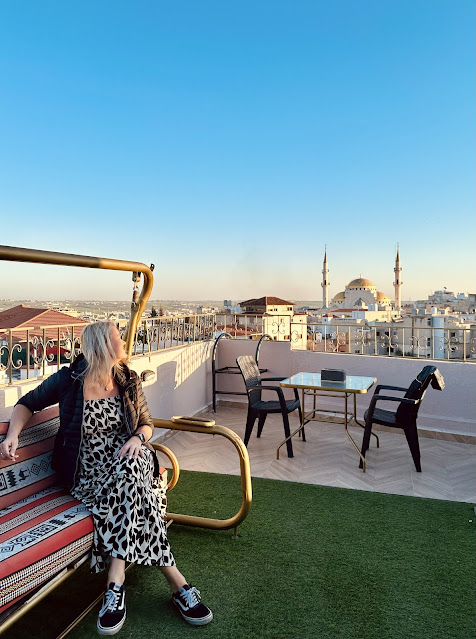





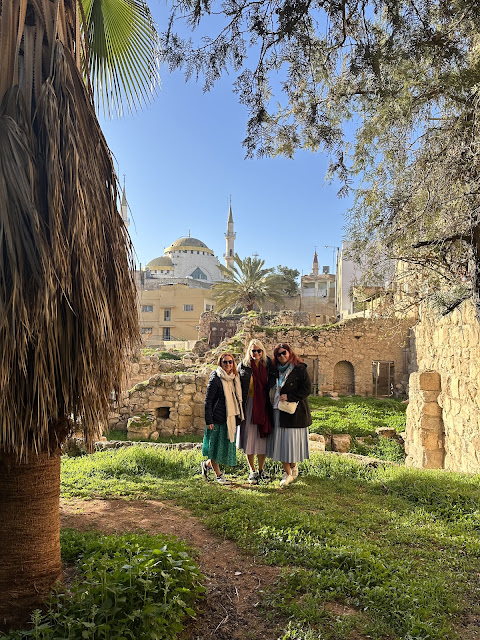




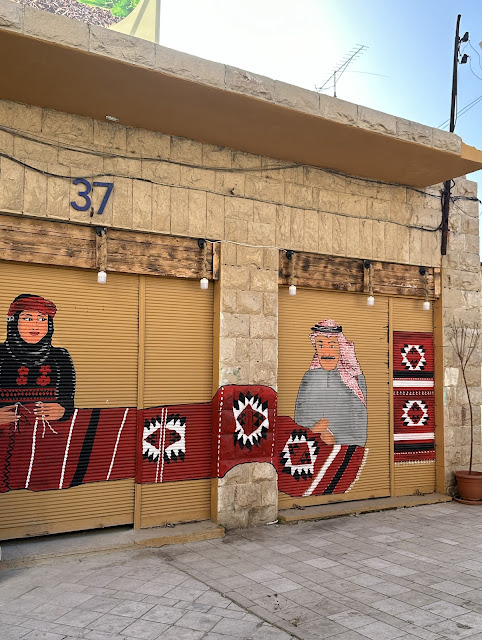


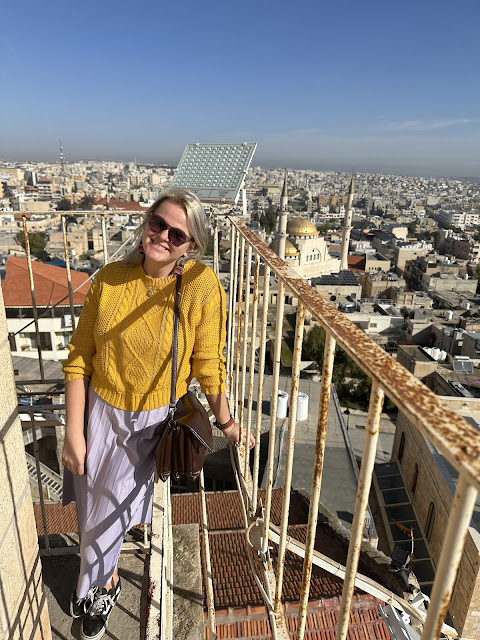
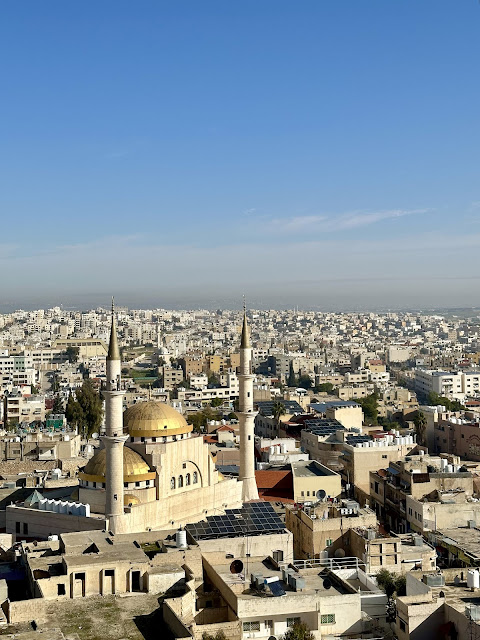




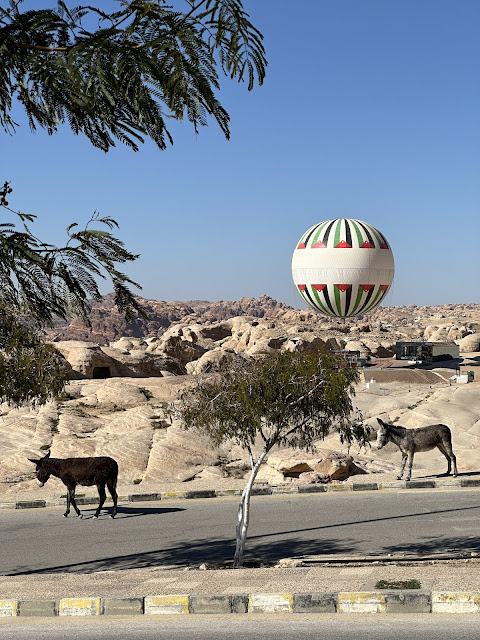

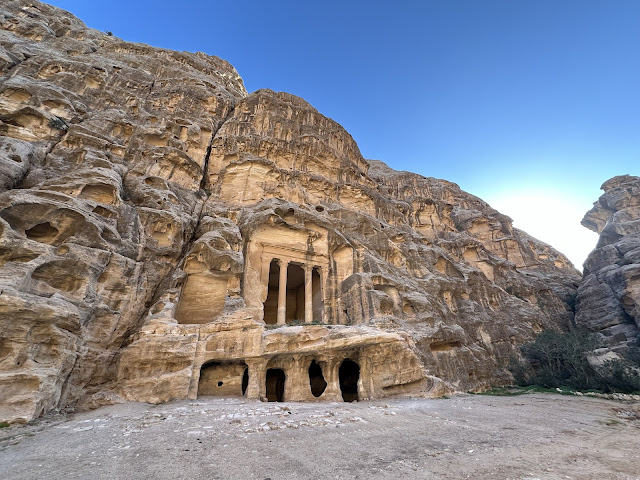



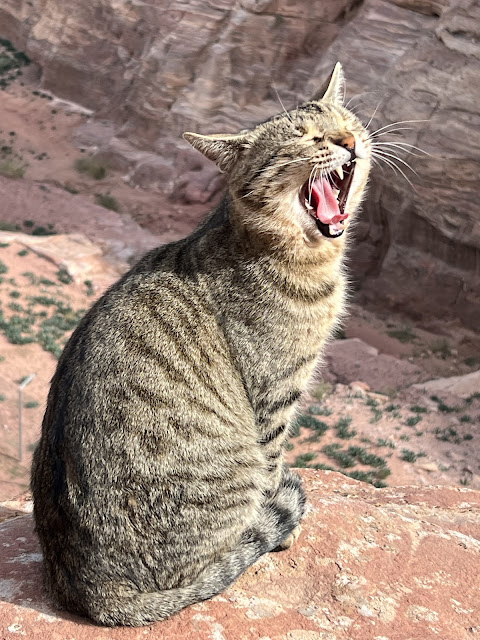





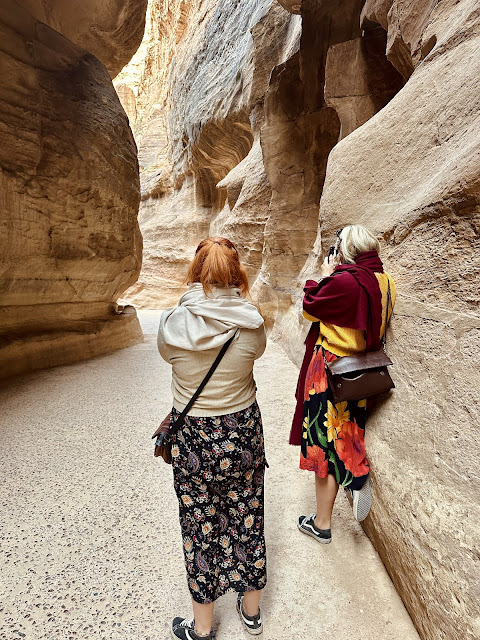

























Comments
Post a Comment